|
Airborne Extra-Light 1/4-Ton Jeeps in World War Two
This page added 2-26-2020.
The Airborne Extra-Light 1/4-Ton Jeep program
was initiated during World War Two to develop a lighter version of the
standard 1/4-ton jeep that could be parachuted into a combat zone.
Six companies developed samples for testing by the U.S. Army. Four
surviving vehicles are on display at the Sam Werner Military Museum in
Monteagle, TN. There were numerous experimental trucks and armored
vehicles that were developed during World War Two that never passed the
rigorous testing, nor were deemed significantly better than the current
production models to warrant production. They became footnotes in
history. The test vehicles were then normally scrapped and were
gone forever. Luckily, this was not the case with the several of
the extra-light jeeps. Somehow, several of these have survived,
and four of the six entrants are on display in one location at the Sam
Werner Museum. This gives the military vehicle historian a unique
opportunity to see these rare vehicles.
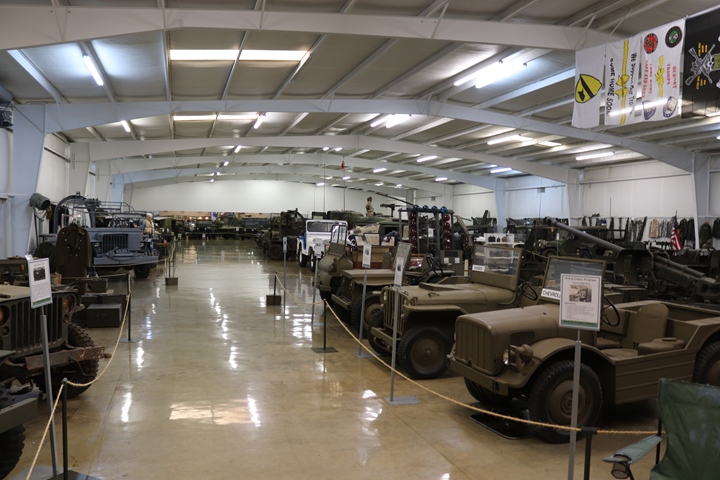
This is the view as a visitor enters the
main display area of the Sam Werner Museum. The museum is located
in Monteagle, TN which is at the summit of the Application Mountains on
I-24 between Nashville and Chattanooga, TN. There are no signs
along the Interstate to indicate this cool museum exists. I had
passed by this way many times, driving to and from Florida, not knowing
the museum was there. It was only by accident that during a web
search in 2019 I discovered the museum existed, and that it had some of
the extra-light jeeps on display. Until I found the museum
website, I didn't even know there was such a vehicle as the extra-light
jeep. On my return from Florida in 2019, I stopped by the museum
outside of its normal business hours, on the off-chance there might be
someone at the museum who would let me in. Luckily, board
member Freddy Cunningham was there to mow the lawn, and he was most
gracious to open the museum and show me around. A big thank goes
out to Freddy for being so kind and generous with his time.
Sometimes one gets lucky. Author's photo.
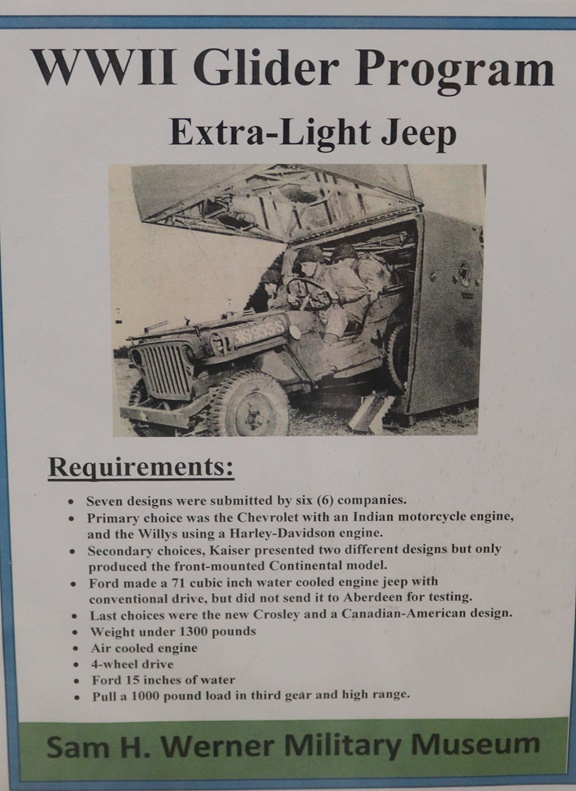
The four vehicles on display at the Sam
Werner Military Museum are the Chevrolet, Kaiser, Crosley and Willys.
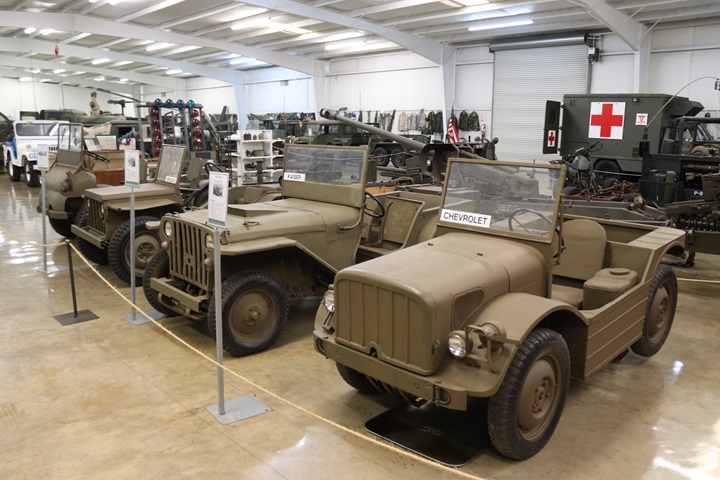
There is a photo like this on the museum's
website. I kept looking at it and realized I needed to have my own
personal photo of these vehicles. Testing revealed that while the
vehicles met the weight requirements; they were not strong enough to be
air-dropped by parachute into a combat zone. The U.S. Army instead
delivered jeeps by glider for the remainder of World War Two.
Author's photo.
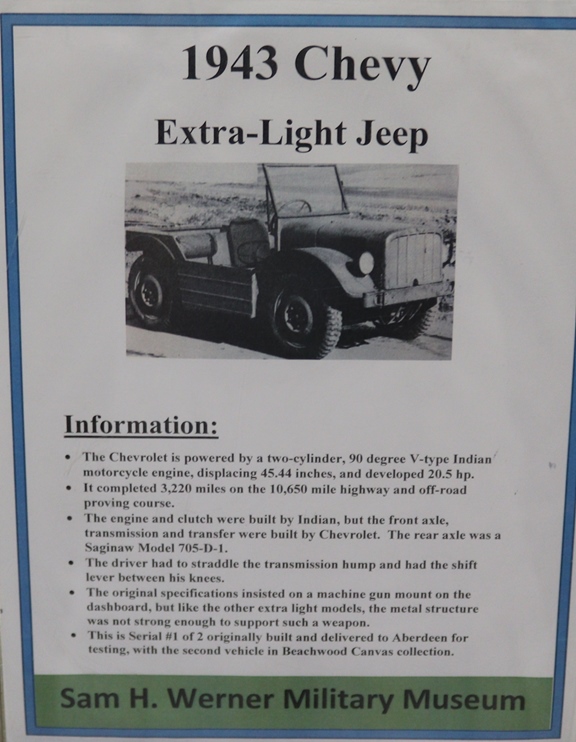
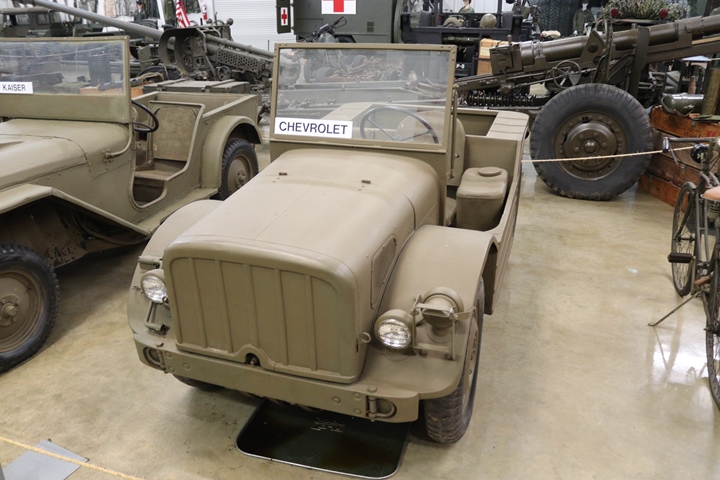
Author's photo.
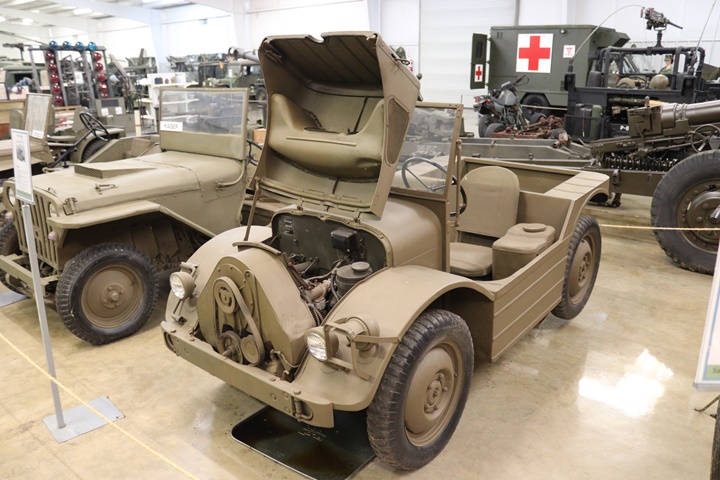
I was allowed to open the hood on the
Chevrolet and look at the engine. Author's photo.
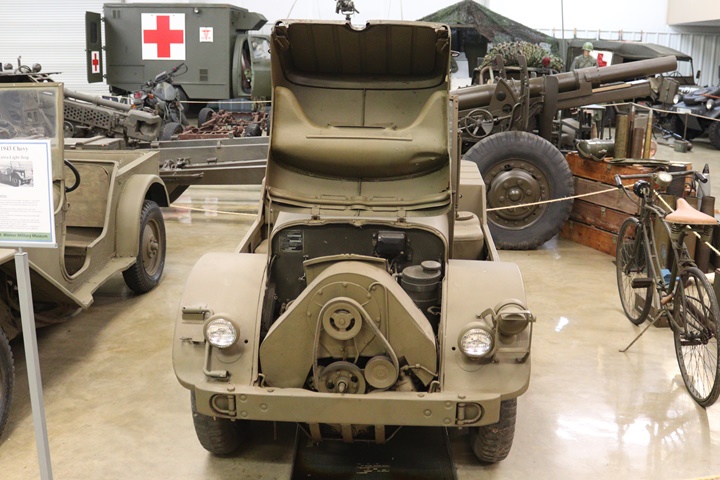
Author's photo.
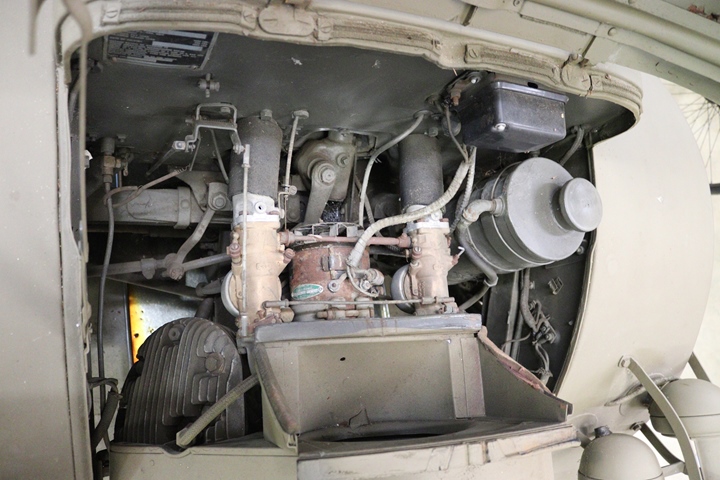
How cool is this?! Not only does the
Chevrolet extra light jeep have an Indian motorcycle engine, but there
is an experimental Delco-Remy alternator on the engine.
I spent many years working for the Delco-Remy Division of General
Motors, and I always am pleased to see our products in World War Two
vehicles. Alternators were not introduced into automobiles by
Delco-Remy and General Motors until 1962. Author's photo.
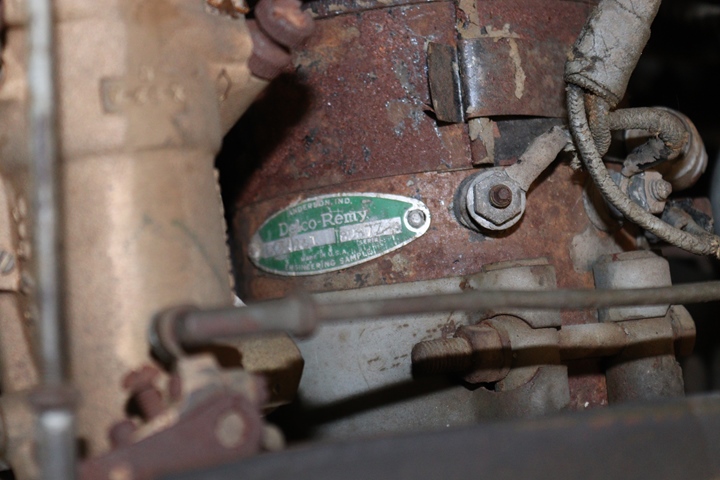
This was an engineering sample built
in the Delco-Remy model shop. Author's photo.
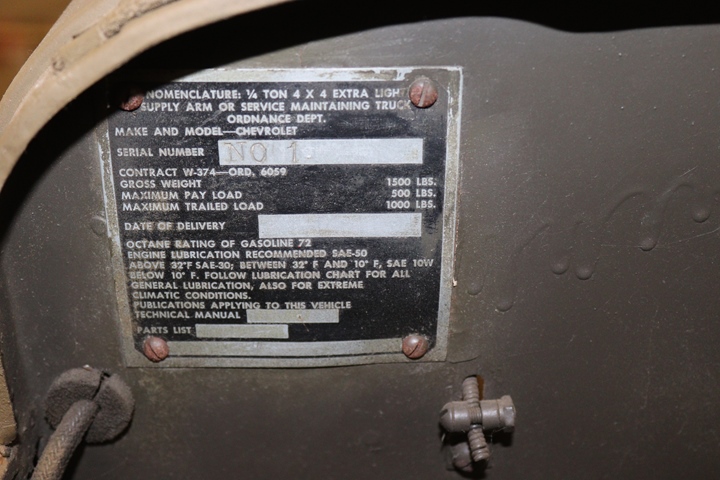
Author's photo.
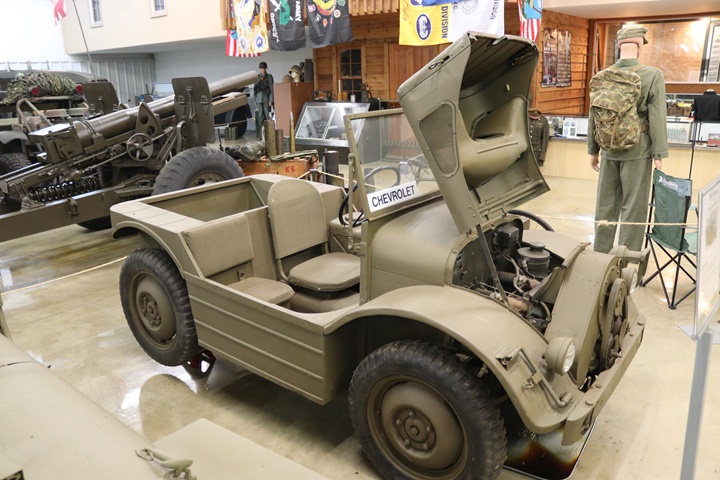
Author's photo.
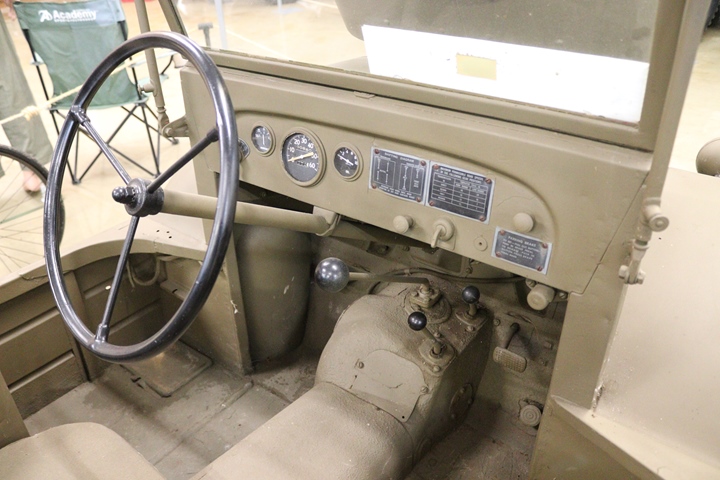
The driver sat in the middle to steer
the vehicle. Author's photo.
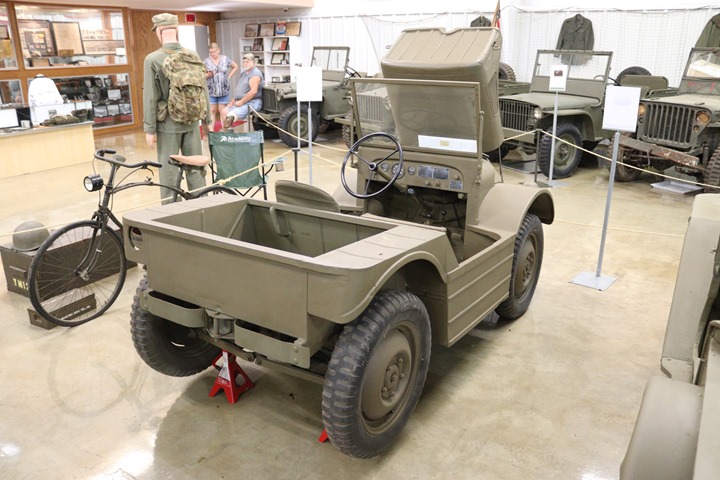
Author's photo.
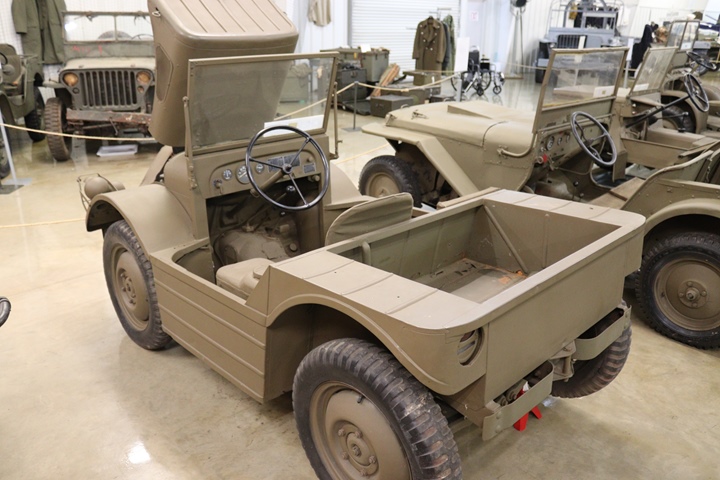
Author's photo.
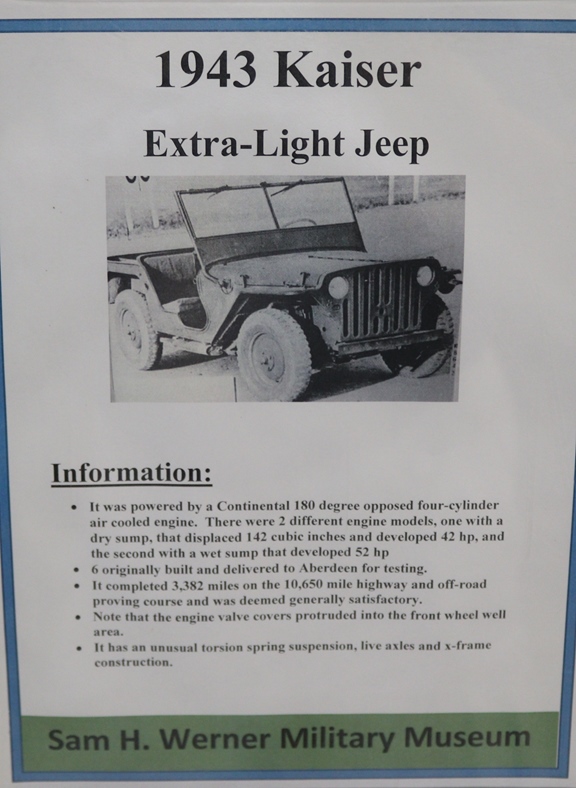
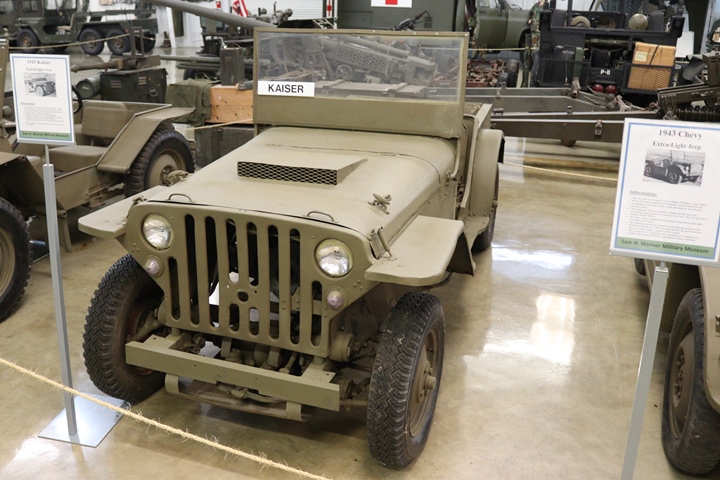
Kaiser is most famous during World War Two for building Liberty ships on
the west coast of the United States. So, it is very strange to
find out that it built six samples for the extra-light jeep program, and
that one of these very rare vehicles is at the Sam Werner Military
Museum. Author's photo.
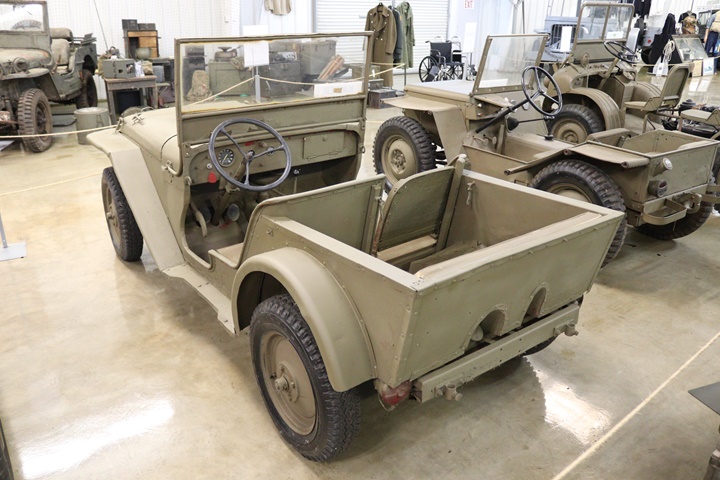
After World War Two Kaiser purchased
the former Graham-Paige Motors Corporation in Detroit, MI. It
could be possible that Kaiser contracted Graham-Paige to build the six
extra-light prototypes. Author's photo.
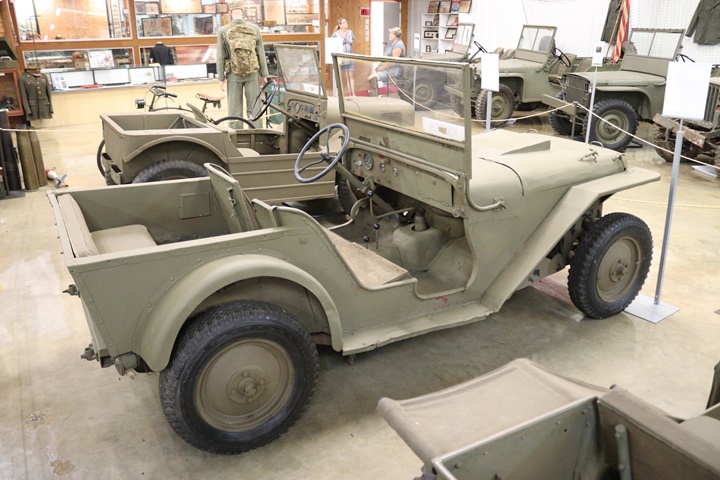
Author's photo.
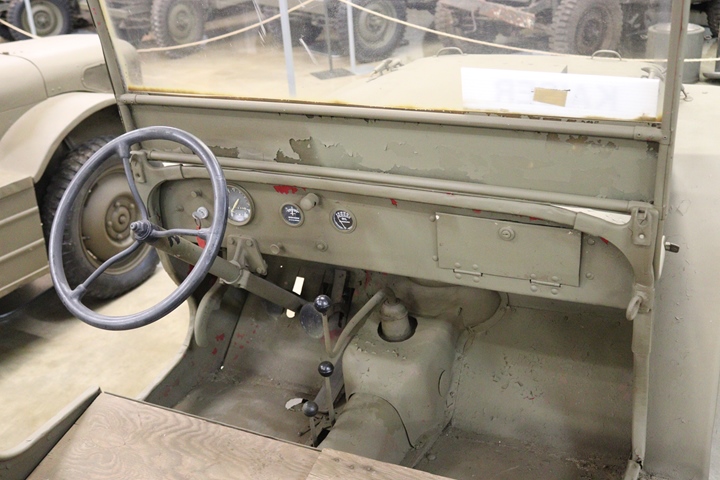
Author's photo.
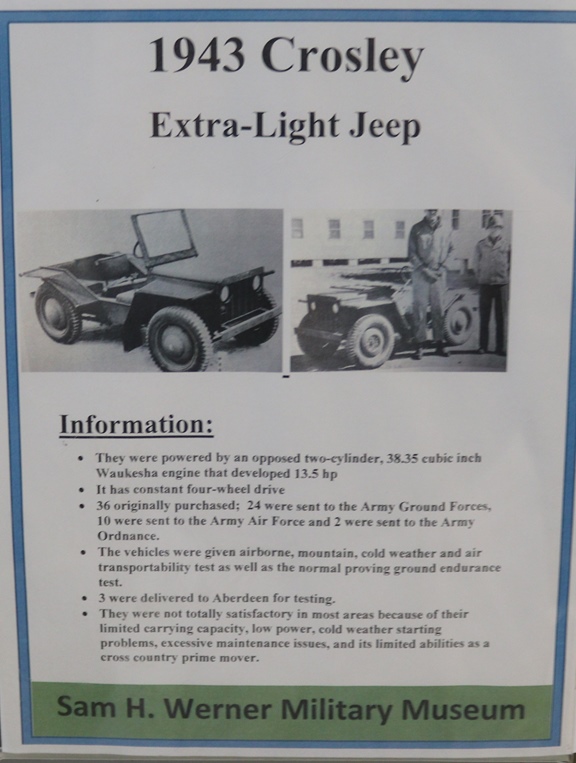
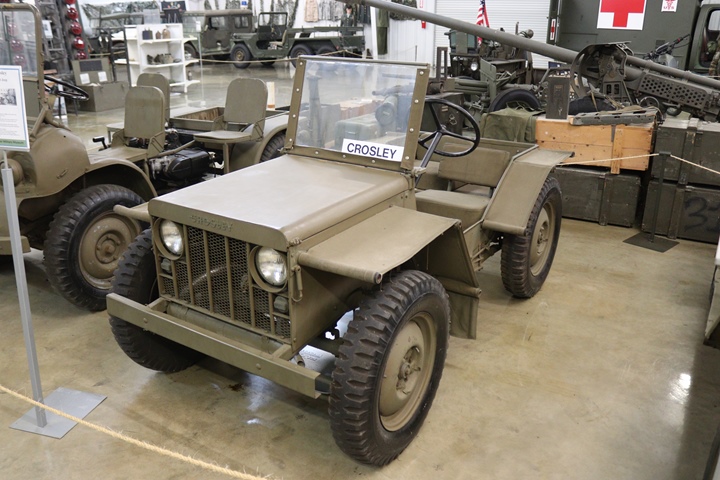
The Crosley Pup is the least rare of the
extra-light jeeps. There are seven of the original 36 built still
in existence. I have found several others on my museum visits.
Author's photo.
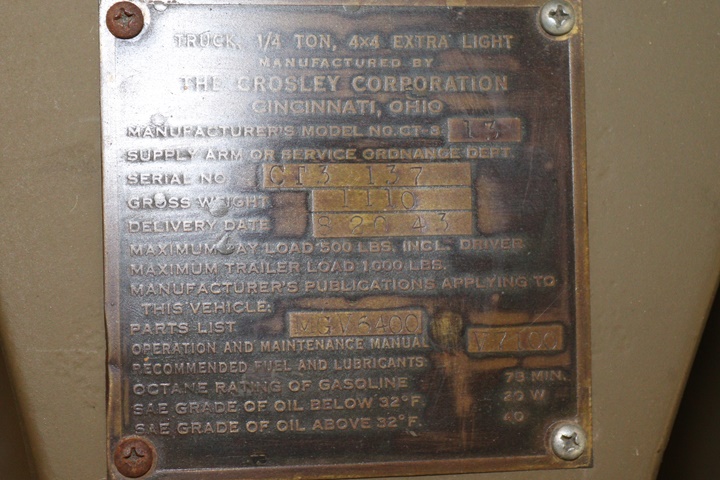
Author's photo.
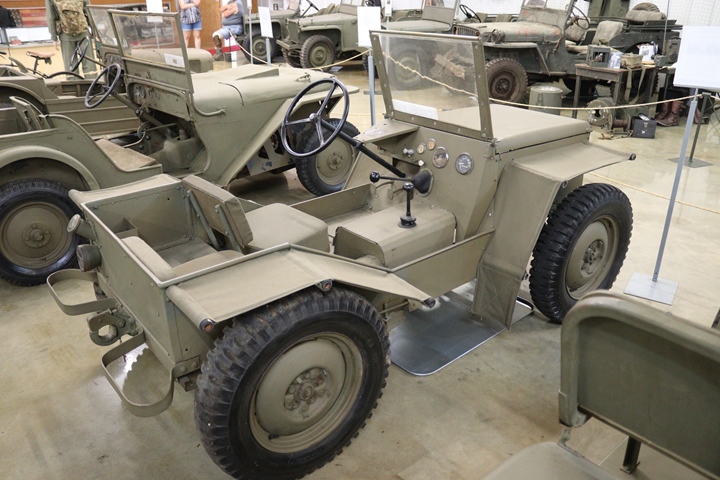
Author's photo.
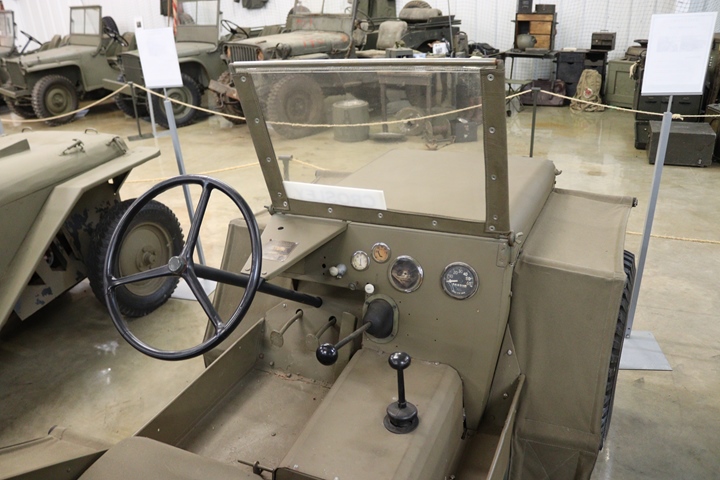
Author's photo.


The Willys-Overland designers thought
"out-of-the-box" on their entrant. This mid-engine vehicle was
powered by a Harley-Davidson motorcycle engine. Author's photo.

Author's photo.

Author's photo.

Author's photo.
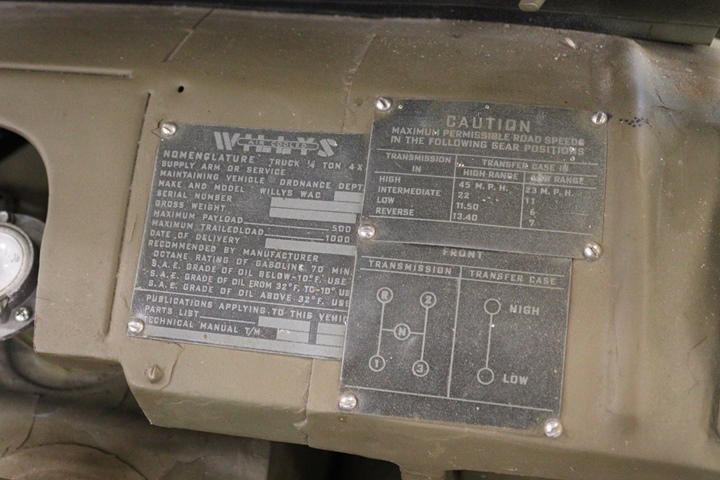
Author's photo.
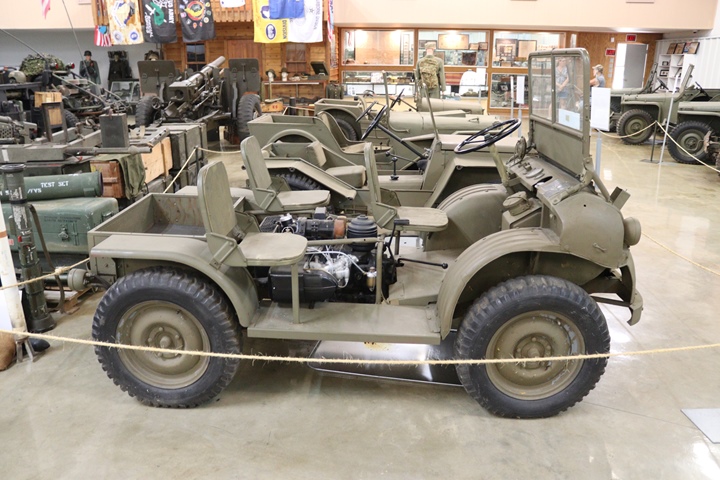
Author's photo.
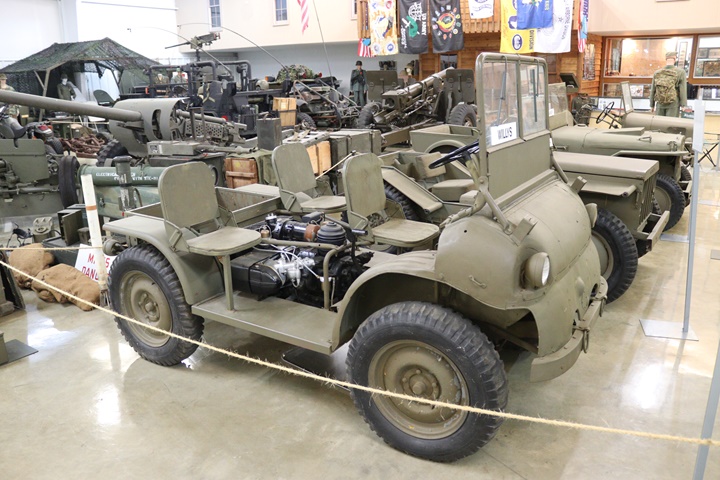
Author's photo.
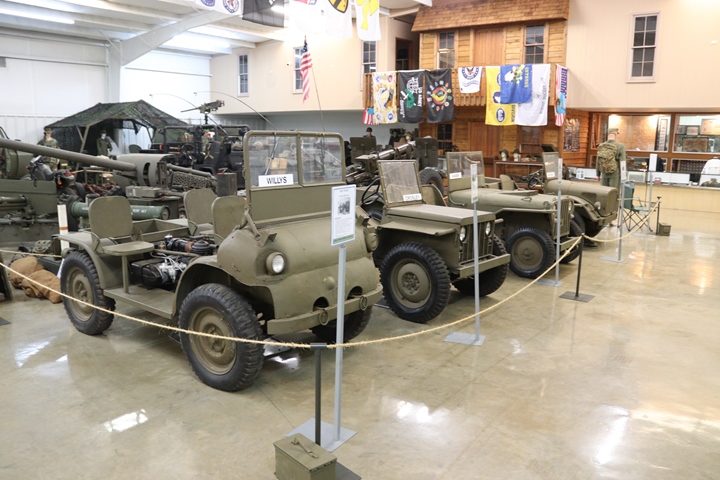
Author's photo.
|































